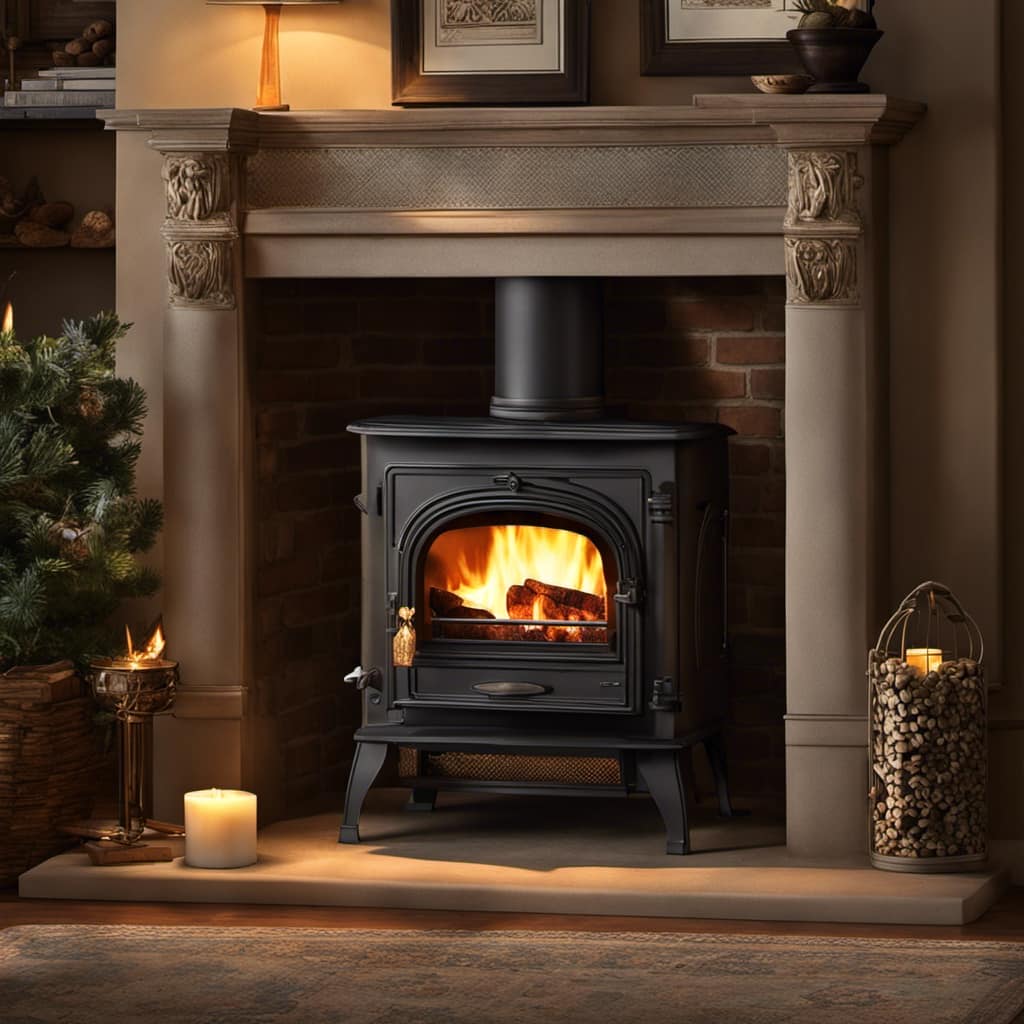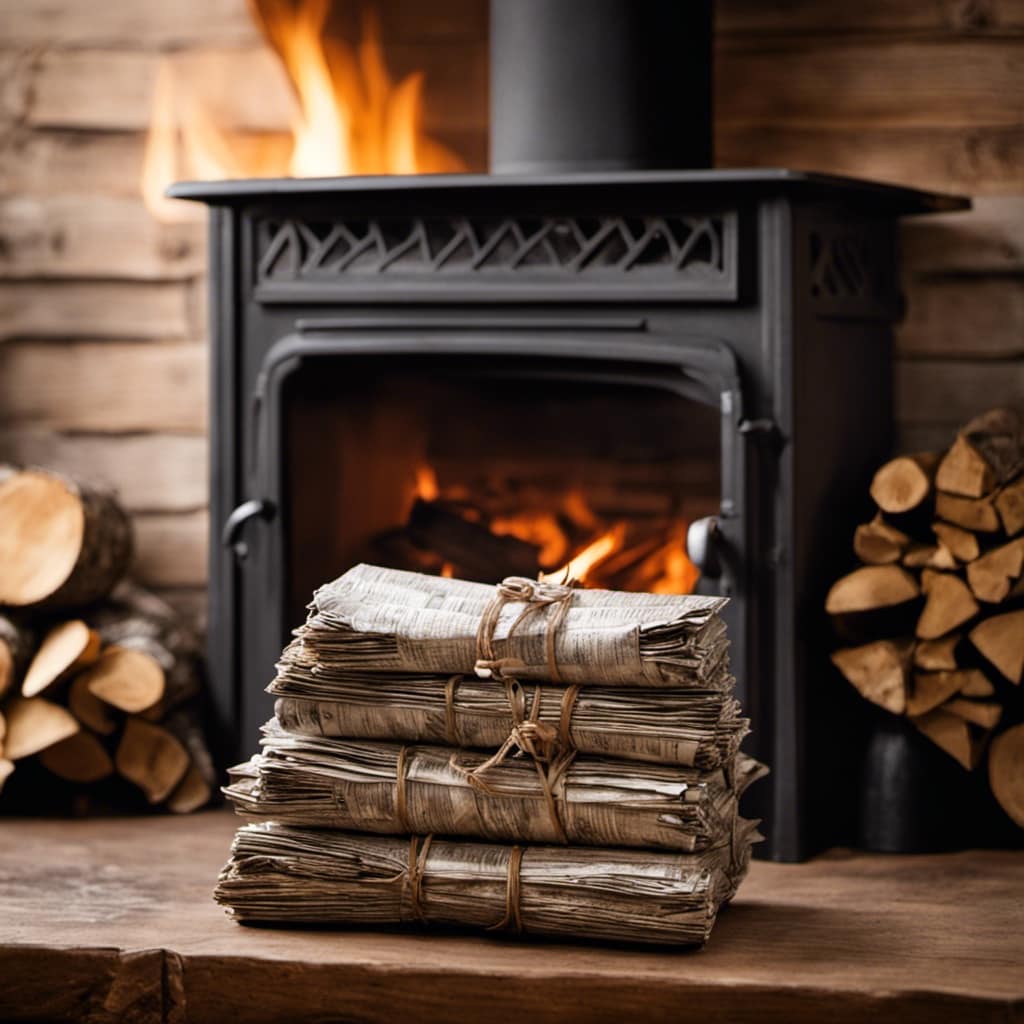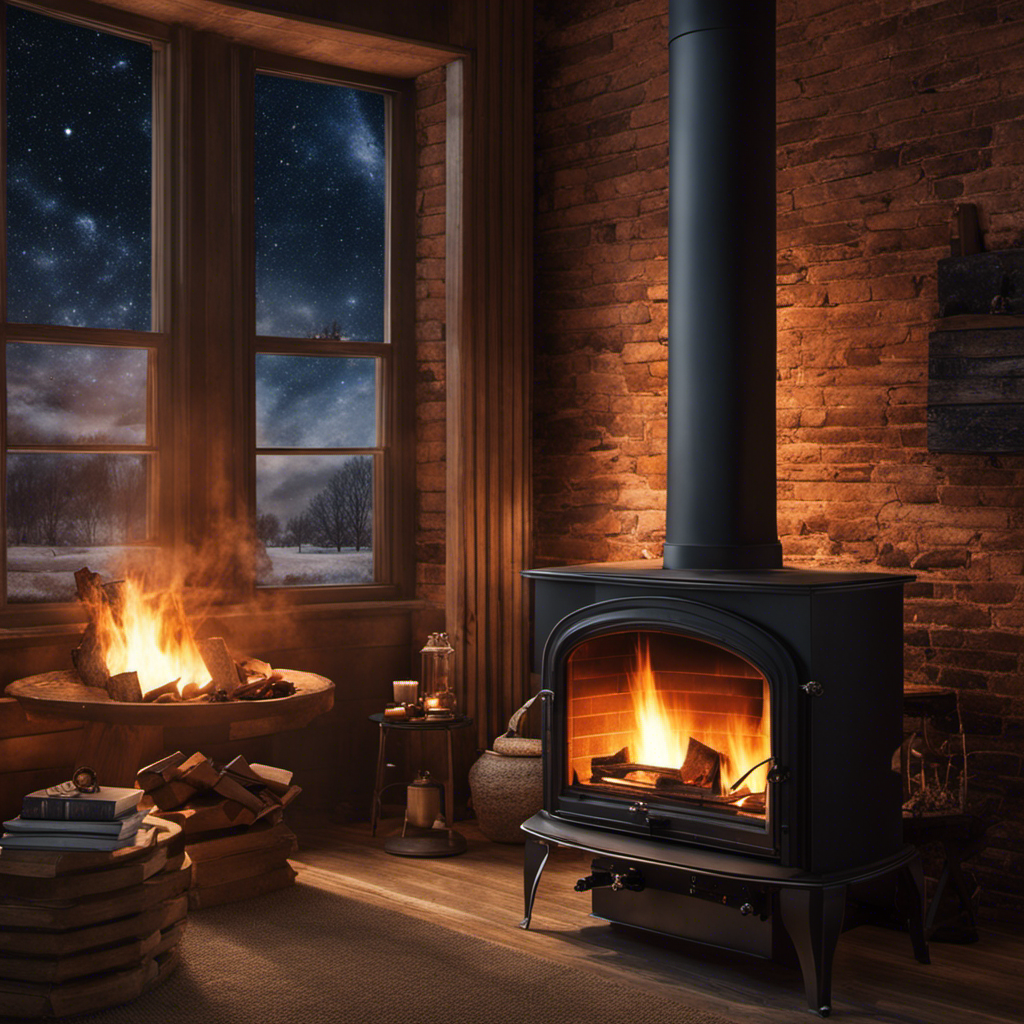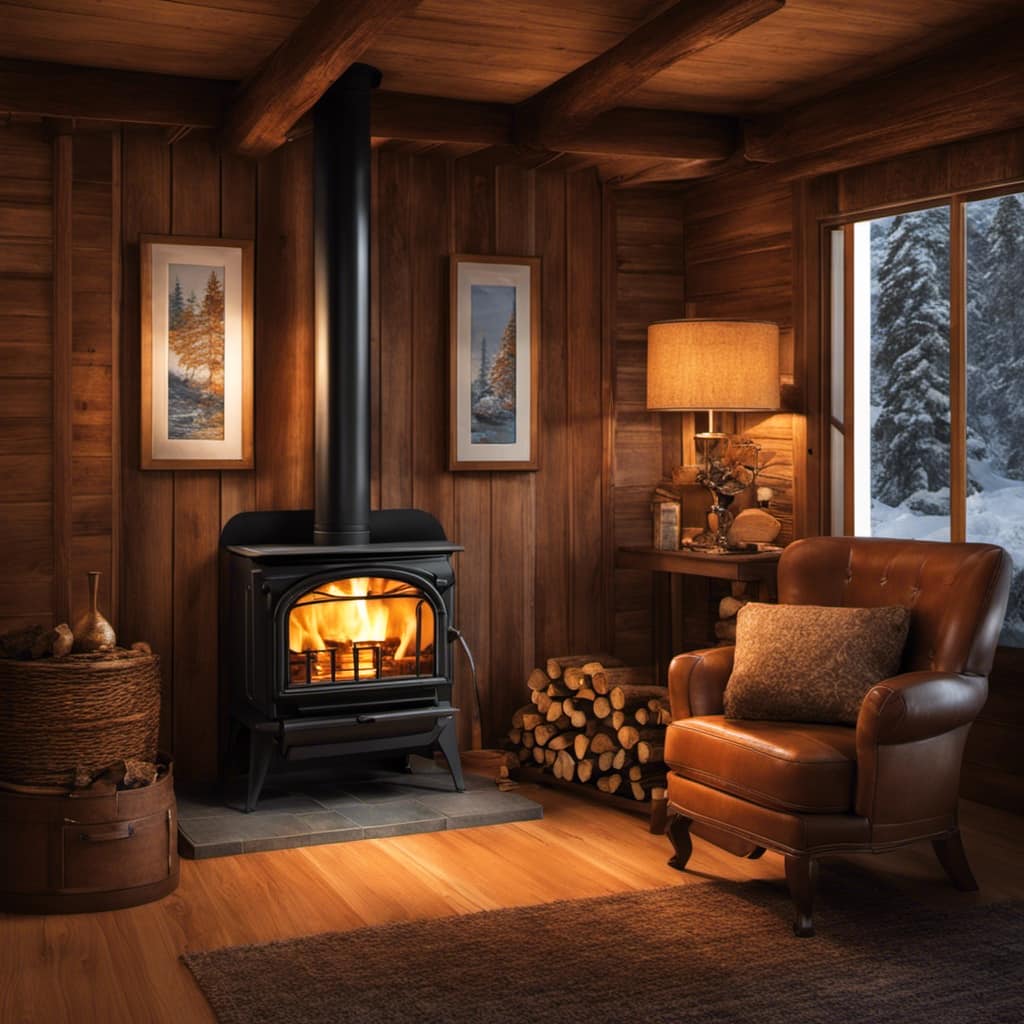As someone who has extensive experience using wood-burning stoves, I understand the significance of selecting the correct type of wood. Believe me, choosing the right wood is crucial for a safer and more enjoyable wood stove experience.
But let me tell you, there are certain types of wood you should never toss into that cozy fire. Softwoods, treated or painted wood, wet or green wood, plywood and particleboard, and even driftwood and bark should be avoided at all costs.
Key Takeaways
- Softwoods like pine, spruce, cedar, and fir should not be burned in a wood stove due to excessive creosote buildup and reduced stove efficiency.
- Treated or painted wood should not be burned in a wood stove as it releases harmful chemicals like arsenic, lead, and formaldehyde into the air, posing health risks.
- Wet or green wood should not be burned in a wood stove as it results in poor combustion, creosote buildup, and contributes to air pollution.
- Plywood and particleboard should not be burned in a wood stove as they emit toxic fumes, including formaldehyde, VOCs, and particulate matter, impacting the environment.
Softwoods
I shouldn’t burn softwoods in my wood stove because they can create excessive creosote buildup. Softwoods include pine, spruce, cedar, and fir. These types of wood have a higher resin content, which when burned, releases more creosote.
Creosote is a sticky substance that can accumulate in the chimney and stovepipe, posing a serious fire hazard. It can also reduce the efficiency of the wood stove and increase the risk of chimney fires.
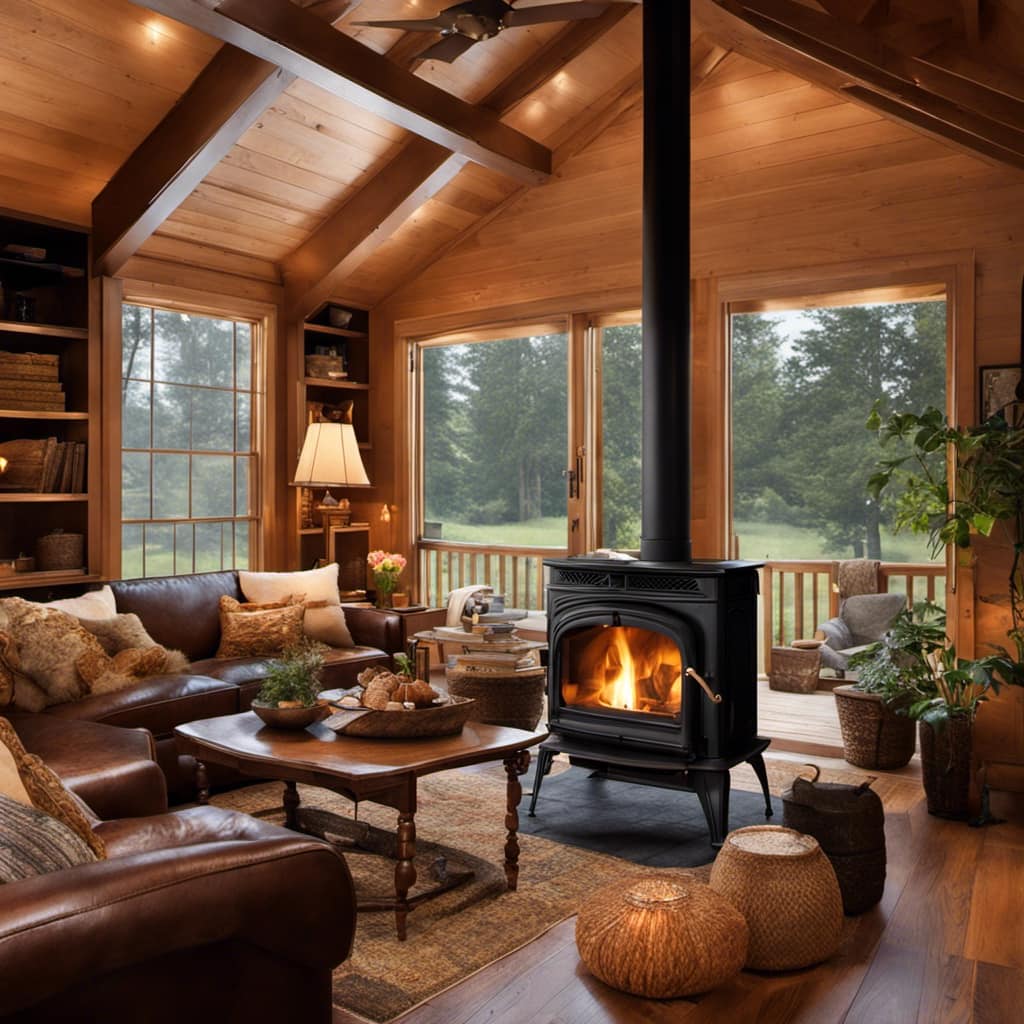
Burning softwoods can also lead to more frequent cleanings and maintenance, as the creosote buildup needs to be regularly removed. To ensure the safety and optimal performance of my wood stove, it’s best to avoid burning softwoods and opt for hardwoods like oak, maple, or ash instead.
Treated or Painted Wood
Burning treated or painted wood in my stove can release harmful chemicals into the air. This is because treated or painted wood often contains toxic substances such as arsenic, lead, and formaldehyde. When these chemicals are burned, they can be released in the form of toxic fumes or fine particles, which can pose serious health hazards. Inhaling these pollutants can lead to respiratory problems, irritation of the eyes, nose, and throat, and even long-term health issues.
To avoid these health risks, it’s important to refrain from burning treated or painted wood in your wood stove. Instead, opt for untreated, natural wood that has been properly seasoned. Hardwoods like oak, maple, or birch are great alternatives as they burn cleaner and produce less smoke and pollutants.
Additionally, using alternative heating methods such as propane, natural gas, or electric heaters can further reduce the need for burning treated or painted wood in your stove. Prioritizing your health and the air quality in your home should always be a top priority.
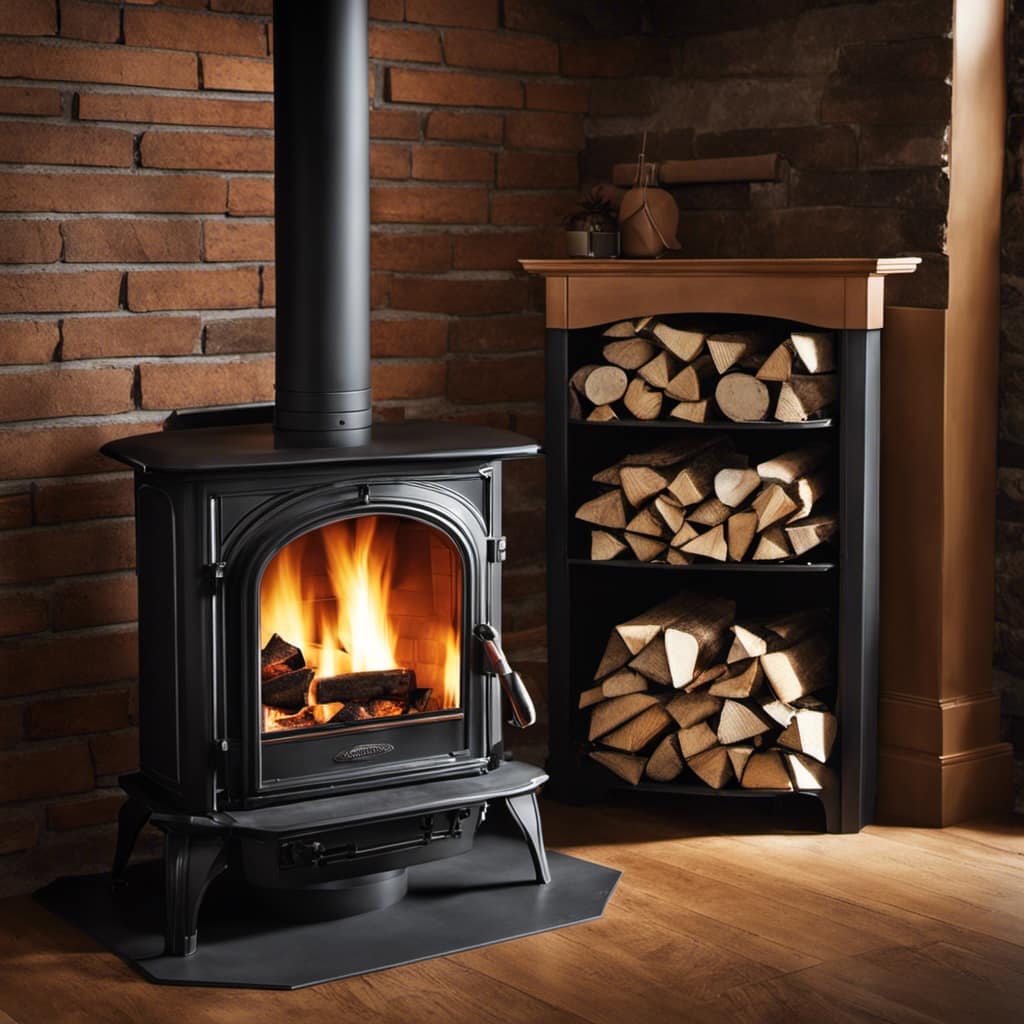
Wet or Green Wood
Burning wet or green wood can result in poor combustion and a build-up of creosote in my chimney. The dampness of the wood prevents it from burning efficiently, causing the stove to work harder to produce heat. This not only wastes energy but also decreases the overall effectiveness of the stove.
To paint a picture in your mind, imagine thick, billowing smoke pouring out of the chimney, struggling to rise into the sky. Wet wood produces more smoke and releases harmful pollutants into the air, contributing to air pollution.
Proper seasoning techniques are crucial to avoid these issues. This involves allowing the wood to dry and age for at least six months to a year. By using properly seasoned wood, you can maximize stove efficiency and minimize the negative impact on the environment.
Now, let’s delve into the next section about plywood and particleboard.
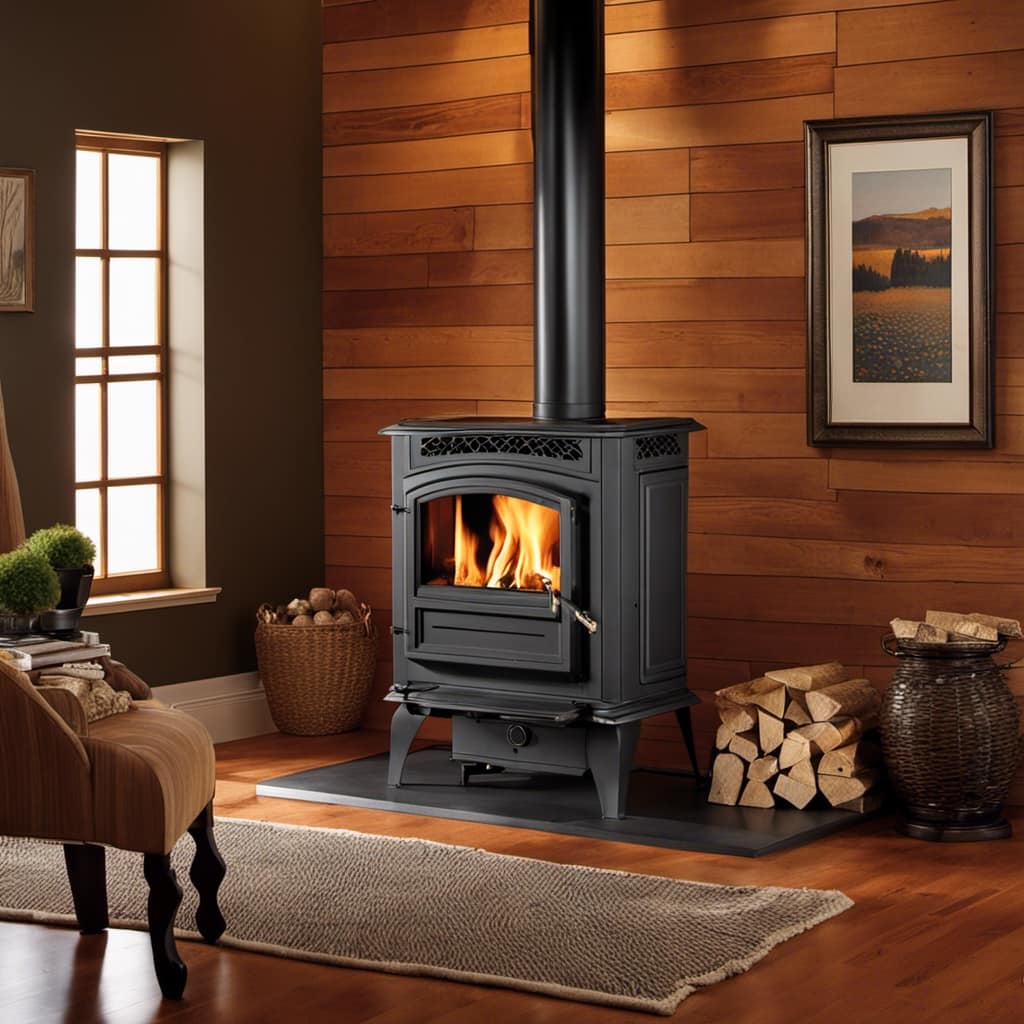
Plywood and Particleboard
Plywood and particleboard are common building materials that emit toxic fumes when burned in a stove. The environmental impact of burning these materials is significant, as it releases harmful chemicals into the air. These fumes can be detrimental to both human health and the environment. To illustrate the severity of this issue, consider the following table:
| Toxic Emissions | Environmental Impact | Health Risks |
|---|---|---|
| Formaldehyde | Air pollution | Respiratory issues |
| VOCs | Soil contamination | Allergic reactions |
| Particulate matter | Water pollution | Irritation of eyes and skin |
As an alternative to burning plywood and particleboard, it is recommended to use other types of wood that do not contain harmful chemicals. Hardwoods like oak, maple, and cherry are excellent options for burning in stoves as they produce less toxic fumes. Additionally, using wood pellets made from compressed sawdust or agricultural waste can be a more environmentally friendly alternative. By making these choices, we can minimize the negative impact on our health and the planet.
Driftwood and Bark
I love the unique and natural look that driftwood and bark bring to my fireplace. When I gather driftwood, I imagine the journey it took, floating in the water and being shaped by the elements. As I place it in my wood stove, I can almost hear the crackling sound it makes, reminiscent of waves crashing on the shore. The aroma that fills the room is like a walk through a forest after a rainstorm.
However, it’s important to be mindful of the environmental impact of burning driftwood. It releases salt into the air, which can harm nearby plants and soil. As for bark, while it adds a rustic charm to the fire, it can release harmful chemicals when burned, leading to potential health hazards.
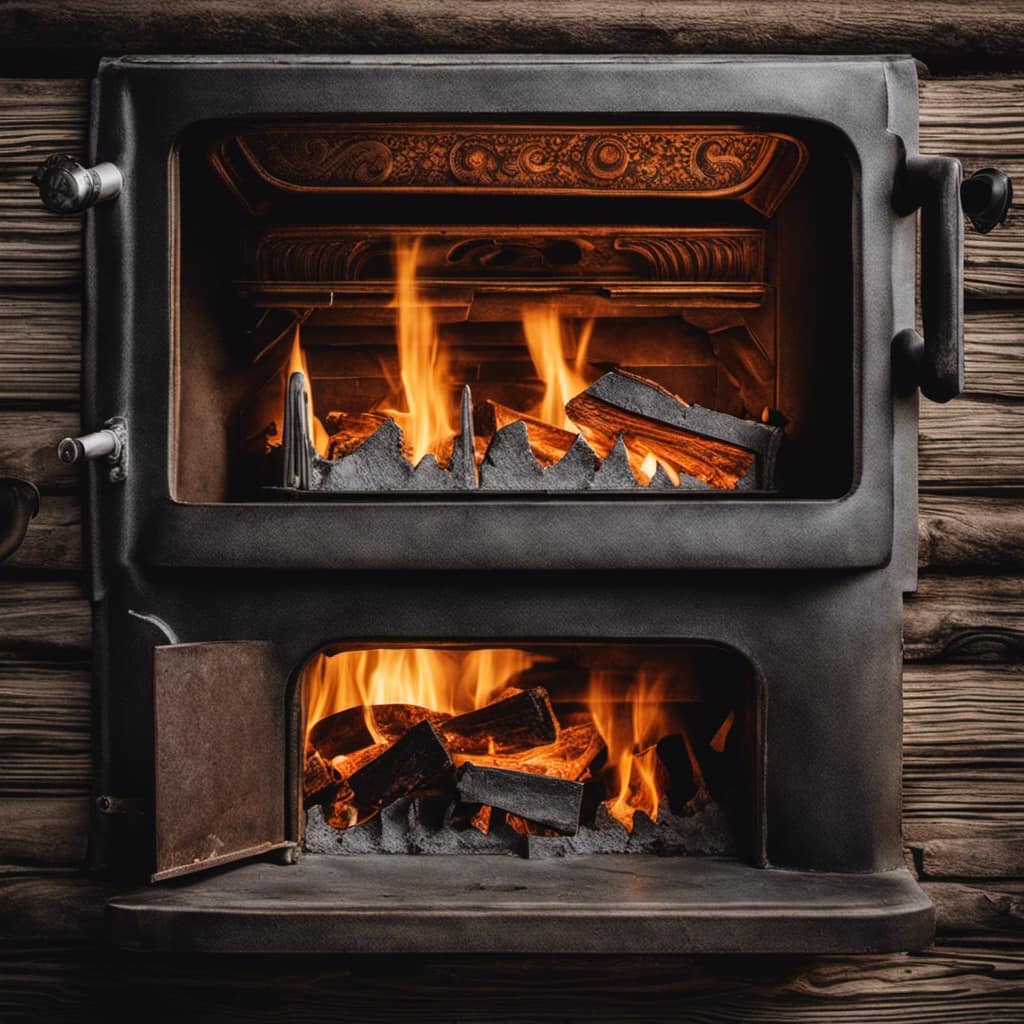
It’s essential to always prioritize safety and consider the impact of our choices when enjoying the beauty of nature in our homes.
Frequently Asked Questions
Can I Burn Softwoods in a Wood Stove?
I wouldn’t recommend burning softwoods in a wood stove. They tend to burn quickly, produce less heat, and create more creosote buildup. It’s better to use hardwoods or consider alternative fuel sources for a more efficient and safer heating experience.
Is It Safe to Burn Treated or Painted Wood in a Wood Stove?
Burning chemically treated wood in a wood stove can be dangerous. It releases toxic fumes and pollutants into the air, posing health risks. Similarly, burning painted wood is unsafe due to the harmful chemicals in the paint.
What Are the Risks of Burning Wet or Green Wood in a Wood Stove?
Burning wet or green wood in a wood stove can be risky. It’s like trying to start a fire with a damp match – it’ll struggle to ignite and produce more smoke, creosote, and pollutants, posing dangers to your health and chimney.
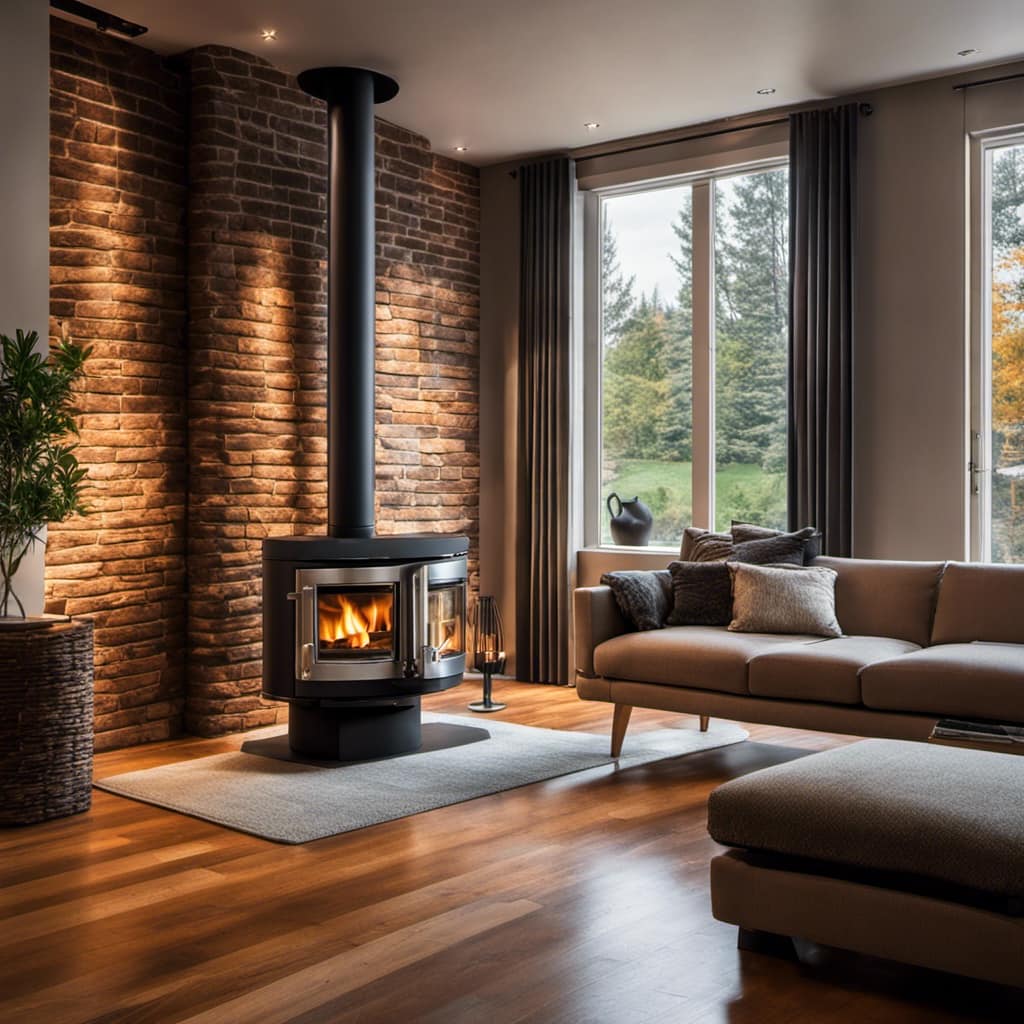
Can Plywood and Particleboard Be Used as Fuel in a Wood Stove?
Plywood and particleboard should not be used as fuel in a wood stove. They contain adhesives and chemicals that can release toxic fumes when burned. It is important to stick to approved, natural wood fuels for safety and efficiency.
Is It Safe to Burn Driftwood and Bark in a Wood Stove?
Burning driftwood and bark in a wood stove is not safe due to the environmental impact. Instead, consider using them for decorative purposes or repurposing them in crafts. Be mindful of the potential toxins released when burning certain types of wood.
Can Burning Wood at High Temperatures Cause Harmful Fumes?
Burning wood at high temperatures in a wood stove can affect the air quality inside and outside your home. It’s important to consider wood stove heat efficiency to minimize the release of harmful fumes and pollutants. Proper ventilation and regular maintenance can help mitigate the potential health risks.
Conclusion
In conclusion, it’s crucial to be aware of the types of wood that shouldn’t be burned in a wood stove. Softwoods, treated or painted wood, wet or green wood, plywood and particleboard, as well as driftwood and bark should be avoided.
By understanding these guidelines, we can ensure the safe and efficient use of our wood stoves, preventing potential damage and hazards.

Remember, knowledge and caution are key when it comes to selecting the right wood for your stove.
Growing up surrounded by the vast beauty of nature, Sierra was always drawn to the call of the wild. While others sought the comfort of the familiar, she ventured out, embracing the unpredictable and finding stories in the heartbeat of nature.
At the epicenter of every remarkable venture lies a dynamic team—a fusion of diverse talents, visions, and passions. The essence of Best Small Wood Stoves is crafted and refined by such a trio: Sierra, Logan, and Terra. Their collective expertise has transformed the platform into a leading authority on small wood stoves, radiating warmth and knowledge in equal measure.


